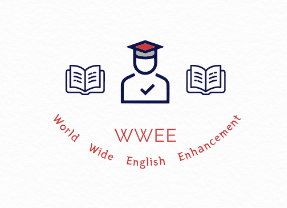Communication is the basis of human interaction, and it plays a vital role in personal, social, and professional life. Communication aids in understanding, collaboration, and problem-solving, but there are several obstacles that always tend to interfere with the smooth flow of ideas and information. These may be nurtured through language barriers, cultural diversity, emotional blockages, or misunderstandings, and sometimes through technology. This essay discusses a few common communication barriers and their effects on interpersonal and organizational levels.
1. Language Barriers
Language is the basic tool for communication; however, the difference in language and different vocabularies create huge barriers. Certainly, when people do not share a common language, or there is too much technical jargon along with complicated terms involved, misunderstanding easily occurs. Even the speakers of the same language may also face problems since dialects, slang, and accents may differ, causing fiasco due to unclear reception or misinterpretation of the message.
Non-verbal signals, like body language and tone of voice, might differ across cultures and cause the problem to reach a whole new level. Some gestures considered polite in one culture can be outrageously offensive to people from another culture. Such misunderstandings happen unwillingly. Thus, making the language simple could help surmount the barriers. Even terms which are jargon should be avoided, and interpreters or translation tools could help bridge the gap, if needed.
2. Psychological Barriers
Few psychological factors play a great role in effective communication. Emotions of fear, anxiety, or mistrust may construct a dam or barrier that will disallow open and frank exchange. For example, if somebody is feeling less secure or afraid of criticism, he could withdraw from fully expressing opinions. Similarly, preconceived notions or stereotypes may also distort our perception about messages from the other person and lead to biased interpretations or judgment.
Stress and emotional overload impede active listening, for it may cause distraction or misinterpretation. These can be minimized as psychological barriers if the emotions are managed and the environment is made friendly for open dialogue, making communication effective and clear.
3. Cultural Barriers
Cultural diversity can amply affect the mode of communication either in a diversified or global setting. Culture molds all the norms, values, and beliefs concerning communication: how one communicates, what to say, and even how messages are perceived. In some cultures, communication needs to be direct, while others find indirect or subtle communication more apt. Lack of awareness about this sensitivity in culture may lead to misunderstandings or conflicts.
Besides, cultural barriers may influence non-verbal communication: eye to eye contact, gestures, personal space. Overcoming cultural barriers does require that the business be culturally aware and sensitive, and where necessary, adjust their style of communication to suit context and audience.
4. Physical Barriers
Physical barriers refer to those environmental causes that might interfere with communication. Included under these are such variables like noise, distance, and technological problems. It goes without saying that one would not be able to hear and give full attention in a very noisy environment while the person tries to communicate some information. Distance between communicators may also weaken the effect of communications, especially when one has to use some forms of digital tools like email or video conferencing, which at times result in delays and glitches as a result of technical problems.
Poor lighting, cramped spaces, or uncomfortable settings also have their impact on communication as there will be so much disturbance for participants or they will feel uneasy thus not fully involved in the conversation. Similarly, conducive environments, such as a quiet space and reliable technology, could minimize physical barriers and improve the quality of communication.
5. Attitudinal Barriers
Attitudinal barriers are mostly associated with negative attitude, prejudice, or lack of motivation. The process of communication can be applied to greatly affect the attitude towards the subject, the individual they are communicating with, or a situation. As an example, a listener may be either uninterested or disinterested that he does not pay attention to the speaker; hence, miscommunication develops. Similarly, if one views a speaker ill before even listening to his message, no matter how valuable the message may be, he will not be open to the ideas presented.
Overcoming these attitudinal barriers requires an induced positive approach, listening to each other, and respect amongst communicators. Empathy, along with the resultant understanding of others’ viewpoints, could also be induced to reduce these barriers.
6. Technological Barriers
Contemporary communication is becoming more dependent on technology; at the same time, it introduces problems of its own. Technological barriers involve poor internet connectivity, malfunctioning gadgets, or the abuse of technology in communication. Such happens to be the case when an email seems unclear either because of weak writing skills or too much abbreviation involved, which may fail in its delivery or is disrupted in transmission during a video call.
Besides, excessive digital communication can decrease the richness of interaction sometimes because the non-verbal gestures get lost with simple text messages. In order to overcome technological barriers, users have to ensure proper use of tools, maintain technical literacy, and select the right medium for the message.
7. Organizational Barriers
These are usually initiated within organizations through things like hierarchical structures, departmental silos, or strict policies. A very strong chain of command could be an example of this, whereby there is no free flow of communication between lower cadres and the upper management, which may cause delays in communications or distorted messages. Besides, the culture of the organization might affect the jargon or formality in the communications, which might confuse or disengage recipients of the message.
Companies should enforce open channels of communication, feedback, and unwinding of the complex process to overcome organizational barriers. So, this will help an organization get rid of attitudinal barriers and develop a culture of transparency by removing hierarchies; this will go a long way in improving internal communication within an organization.
Conclusion
It is very easy for obstacles in the form of language, culture, emotion, and technology barriers to place a wedge in various processes of communication. Problem identification is the first step in trying to overcome the problem. Simplification of language, enhancement of cultural awareness, control of emotions, and proper use of appropriate communication tools will enhance an individual’s or an organization’s communications. Communication, when done properly and openly, will be one way of gaining understanding, collaboration, and good relations with people from all walks of life.


